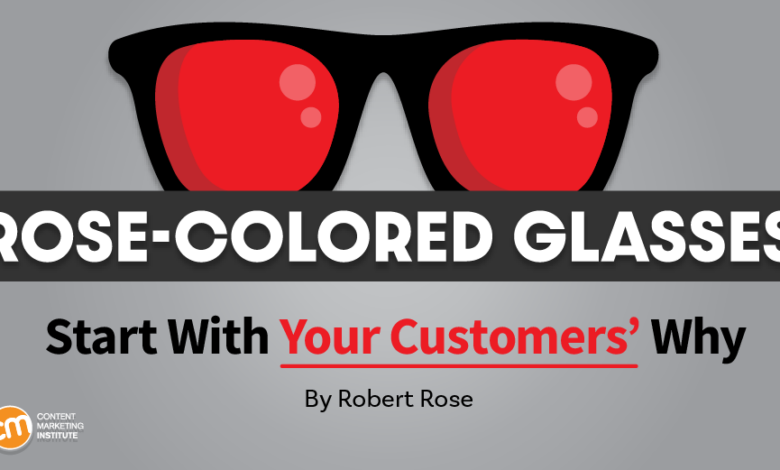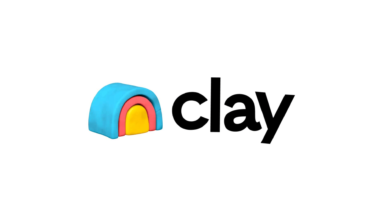We got the content of “Start with Why” wrong. Here’s how to fix it

At a conference last week, the CEO of a professional services firm asked me about some advice he received from a marketing consultant.
The consultant urged the company to revamp its messaging to focus on its team’s passion for what it does. According to advice, even major client presentations should begin with this message.
“Ahhh,” I said. “They want you to start your message with “your why.”
“Yes,” agreed the CEO. “That’s exactly it. So, what do you think?
I smiled and replied, “Well, if we start with ‘why,’ my answer is why you shouldn’t follow this advice.”
Which why matters most?
This consultant isn’t the only one talking about using “your why” as the anchor of your brand story. So many articles tout the advice to “know why” that the phrase has become a marketing cliché.
And yes, this one talks about it too.
But I think the advice to start with “know why” sets marketers up for error.
The idea of finding the “why” behind what you do gained traction nearly a dozen years ago thanks to Simon Sinek’s book, Start With Why and the accompanying Ted Talk.
From a marketing and branding perspective, Sinek’s idea was simple: He said, “People don’t buy what you make; they buy why you do. Therefore, he suggested, brands should start their positioning with their why.
Sinek later withdrew from brand positioning why in his follow-up work, Find Your Why: A Practical Guide to Discovering Your Purpose and That of Your Team. This book focuses on how people (not brands) can find their unique purpose to motivate their actions. I think that’s the much more useful goal of its why framework.
Yet the advice to find the why of the brand before creating content has become the rallying cry of many agencies and brand storytelling consultants.
Here’s the problem: Most people outside of your brand don’t care about your why.
And even if they do, that’s not why they buy from you. And it’s not an effective way to differentiate yourself from your organization’s competitors.
The challenge of why-based brand stories
Let’s be honest. Most businesses don’t start (or stick with) a fantastic, world-changing why.
Even some of Sinek’s original examples never really took this approach. Brands have conveniently reverse-engineered their why to fit a brand narrative.
For example, this famous Ted Talk opens with why Apple is successful: “In everything we do, we believe in challenging the status quo. We believe in thinking differently.
As Sinek pointed out, this statement inspired Apple’s successful Think Different campaign, which ran from 1997 to 2002.
But by 2010, when Sinek published his book and gave his Ted Talk, Apple had long since moved from Think Different to Get a Mac.
This campaign featured John Hodgman (personifying a PC) and Justin Long (as Mac) explaining how the Mac platform made it easier to create photo books and listen to music.
It certainly didn’t support the idea of ”challenging the status quo” and “thinking differently.” Instead of focusing on why Apple works, ads explain how the product’s features relate to why potential customers would want it.
Now consider the marketing campaign for Apple’s new AI Intelligence writing feature.
This ad does what Sinek says every company’s content does: it focuses on features and benefits (while showing how it helps potential customers).
In fact, you could say it’s just a more fun copy of Google’s system. “Dear Sydney” Advertisement fail.
Has Apple forgotten how to market? Has the company forgotten its why?
No.
Apple didn’t figure out why and then changed its business accordingly. She ended up understanding the why of her customers. Then it clarified What (emphasis added) the business he was actually in (making the “things in life” easy) and how to communicate it.
Understanding the why of your brand is important.
But (not to get too meta here), knowing your customers’ reasons is more important for marketing and content development.
Match your why with your customers’ why to differentiate yourself with content
I see situations like the one the CEO described to me all the time. Teams craft messages to convey the why of their brand without connecting it to the why of their customers.
Frustration sets in when reactions to their ideas sound like this: “But do customers want all of this?
The brilliance of the Think Different campaign is not that Apple proclaims itself among the people who “are crazy enough to believe they can change the world» (and they are the ones who do it).
This is because she made the creative bet that her clients would find themselves in these iconoclastic figures. The Apple campaign didn’t say, “We think differently.” He said: “You think differently. »
Businesses are still struggling to create truly differentiating content. But it’s not because they don’t understand how to uncover their why. Many books and workshops exist to help brands achieve this.
This is because they believe that the why of the brand should dictate what they do.
The why of your brand only matters if it defines Why you make What you do it and how that connects to the things customers care about. But you can’t stop there.
You always have to convince customers to like what you do and how you do it.
How to find your customers’ whys
One of the techniques I use to move from the “tactical idea” to the “broader goal” is a classic exercise built on the basis of Exercise 5 Why of the Six Sigma problem-solving technique.
Here’s how it works. First, come up with content marketing ideas (in a group or alone). Ideas might look like this:
Launch a social media effort to educate prospects about using the type of product we sell. Position our company/brand as a thought leader in the field. Create a white paper or video series on the business benefits of the type of service we offer. Use a blogging platform to curate industry news to position ourselves as thought leaders.
Then take one of the ideas and ask why five times. This will help you understand the true purpose of this idea and how it fits into your larger story. (By the way, this example comes from a real workshop for a B2B company.)
Let’s try with the idea of “curate news”.
Starting idea: Use a blogging platform to organize news in our industry to position ourselves as thought leaders.
1. Why Is it important for our clients to organize the news to position ourselves as opinion leaders?
Because our customers will see that we have our finger on the pulse of the business and that we point of view on the industry.
2. Why Is it important for customers to see that we listen and have a point of view on the industry?
Because our customers and prospects will have more confidence in what we say.
3. Why Is it important for our customers and prospects to have more confidence in what we say?
Because developments in our industry are evolving quickly and our customers need a trusted partner to keep them up to date.
4. Why Do customers need a trusted partner to keep them informed of industry news?
Because they are busy trying to succeed, a trusted partner can help them become informed.
5. Why Is it important for our customers’ success to be informed?
Because if our customers are properly informed about the sector, they will be more competitive and more successful.
Well, isn’t that interesting?
In five whys, we moved from a blog focused on “positioning ourselves as thought leaders” to a platform that “helps our clients be more competitive and succeed.”
Go back and read the answers backwards, and you’ll have a why to motivate you and your team.
I did a similar exercise with the CEO of the professional services firm. We worked through an exercise to identify how their perspective aligned with solving their customer’s why.
The answer to the question of why is “to make the client’s business more forward-looking in terms of technology.” But that doesn’t touch the fundamental value.
When we got to the fifth why, we discovered that the client’s answer was “to provide stable employment for their employees, support their families, and create a legacy that lasts beyond their tenure.”
This aligned with the CEO’s view on how their services could help small and medium-sized businesses sustain themselves. But now they had something much more interesting to hold on to rather than saying, “I’m passionate about helping companies become cutting edge.” »
HANDPICKED RELATED CONTENT:
Connect the whys
You’ve probably heard the advice: “Do what you love.” The money will follow. This tip sums up why it’s important to understand your own why.
But for content creators and marketers working for a brand, I suggest this modification: “When your audience loves what you love to do, the money will follow.” »
Matching your brand’s why with your audience’s and customers’ why puts you on the right path to convincing them to love what you love to do. And that’s how your brand will succeed in everything it loves to do.
You can learn so much more from the voices of experience in content marketing. To subscribe to daily or weekly updates, visit www.News.ContentInstitute.com/Subscriptions or click the orange subscribe button at the top of any page.
Cover image by Joseph Kalinowski/Content Marketing Institute



